Did you know that tubers vegetables, also known as root vegetables, have been a staple food for centuries and provide a significant part of our global diet? In fact, these starchy and nutritious tubers are not only versatile in cooking but also offer a myriad of health benefits. From the humble potato to the exotic taro and yam, there is a wide variety of tuberous plants and tuber crops that can elevate your meals to new heights of flavor and nourishment.
Join me as I delve into the world of tubers vegetables, exploring their culinary possibilities, their role in our history, and the remarkable health benefits they bring to the table.
Key Takeaways:
- Tubers vegetables, or root vegetables, have been a staple food for centuries.
- They offer a wide variety of options in cooking and can add unique flavors and textures to your dishes.
- Tubers vegetables are packed with nutrients and provide numerous health benefits.
- Exploring the world of tubers vegetables can expand your culinary horizons and improve your overall well-being.
- Get ready to unearth the wonders of tubers vegetables and discover how to incorporate them into your meals for optimal health.
The Power of Leafy Greens
When it comes to juicing, leafy greens are a powerhouse of nutrition. Greens like kale, spinach, and Swiss chard offer a high level of nutritional density, making them an excellent choice for boosting your health.
Let’s take a closer look at the benefits of these leafy greens:
Kale
Kale is a nutritional superstar, packed with vitamins A, C, and K, as well as folate, iron, and fiber. Its vibrant green color is a visual testament to its high antioxidant content, which helps promote detoxification and supports overall cardiovascular health. Including kale in your juices ensures a potent dose of essential nutrients.
Spinach
Spinach is another leafy green that deserves a spot in your juicing routine. It’s an excellent source of iron, which supports healthy oxygen-carrying red blood cells and overall vitality. Spinach also offers a range of other important nutrients like vitamins A, C, and K, as well as folate and fiber. Adding spinach to your juices is a surefire way to boost your nutritional intake.
Swiss Chard
Known for its colorful stems, Swiss chard is a nutritional powerhouse. It provides a variety of minerals like magnesium, potassium, and calcium, along with vitamins A, C, and K. The fiber content in Swiss chard aids digestion, making it a great addition to your juicing recipes. Its slightly bitter taste combines well with sweeter fruits and other greens.
Mixing different leafy greens together in your juices allows you to enjoy a blend of flavors while reaping the nutritional benefits. Don’t shy away from experimenting and finding your favorite combinations.
Here’s a quick and easy juice recipe to get you started:
Green Delight Juice
- 2 cups kale
- 1 cup spinach
- 1 cup Swiss chard
- 1 green apple
- 1 cucumber
- 1 lemon
Simply juice all the ingredients together and enjoy this refreshing and nutrient-packed green delight!
The Refreshing Hydration of Cucumbers
Cucumbers are not only refreshing but also incredibly hydrating, making them a perfect addition to your juicing routine. These green and crunchy vegetables are composed mostly of water, which helps to replenish and maintain optimal hydration levels in the body.
But cucumbers offer more than just hydration. They also contain a compound called silica, which is essential for collagen production. Collagen is a protein that maintains the elasticity and health of our skin, promoting a youthful and glowing complexion.
In addition to hydration and skin health benefits, cucumbers are packed with important vitamins and nutrients. They are a good source of vitamin K, which plays a crucial role in blood clotting and bone health. Cucumbers also provide vitamin C, an antioxidant that helps protect the body against free radicals and supports immune function.
Did you know? The mild and refreshing flavor of cucumbers makes them a versatile ingredient in juice blends, adding a pleasant taste without overpowering other fruits and vegetables.
Whether enjoyed on their own or juiced with other fruits and vegetables, cucumbers are a fantastic way to stay hydrated, promote skin health, and enhance your juicing experience. So, quench your thirst and boost your well-being with the refreshing power of cucumbers!
| Nutrient | Amount per 100g |
|---|---|
| Water | 95.23g |
| Calories | 15 |
| Vitamin K | 16.4μg |
| Vitamin C | 2.8mg |
| Silica | 12.3mg |
The Eye-Health Benefits of Carrots
Carrots are renowned for their vibrant orange color and sweet taste, making them a popular choice for juicing. They are rich in beta-carotene, which is essential for maintaining healthy vision and supporting overall eye health. Carrots also offer a host of antioxidants that help combat free radicals and protect against chronic diseases. Incorporating carrots into your juice blends adds natural sweetness and provides a significant nutritional boost.
Did you know?
“Carrots are an excellent source of beta-carotene, a type of vitamin A that is beneficial for eye health. Beta-carotene is converted into retinol in the body, which is necessary for the production of a pigment called rhodopsin. Rhodopsin is essential for vision in low-light conditions and helps prevent night blindness.”
Carrots also contain other important nutrients for eye health, such as vitamin C, vitamin E, and lutein. Vitamin C is an antioxidant that helps protect the eyes from oxidative stress, while vitamin E supports eye tissue repair. Lutein is a carotenoid that filters harmful blue light and helps maintain the health of the macula, a part of the eye responsible for detailed vision.
When consumed regularly, carrots can provide an antioxidant boost to help combat oxidative damage and reduce the risk of age-related eye conditions, such as macular degeneration and cataracts.
Carrots and Juicing
Incorporating carrots into your juice blends not only enhances the flavor but also allows you to reap the eye-health benefits more efficiently. Juicing allows for easy absorption of nutrients, including those in carrots, as the fiber is removed during the juicing process.
Here’s a simple carrot juice recipe to give your eyes an antioxidant boost:
- Wash and peel 4-5 carrots.
- Cut the carrots into smaller pieces to fit your juicer.
- Run the carrot pieces through the juicer to extract the juice.
- Pour the fresh carrot juice into a glass and enjoy!
For a more refreshing twist, you can add a splash of lemon juice or a few sprigs of mint to your carrot juice. Experimenting with different combinations of fruits and vegetables can also provide a variety of flavors and additional health benefits.
| Vitamin | Amount per 100g of Carrots |
|---|---|
| Vitamin A (beta-carotene) | 8,283 IU |
| Vitamin C | 5.9 mg |
| Vitamin E | 0.66 mg |
| Lutein | 123 mcg |
Table: Nutritional content of carrots per 100g
The Energy and Blood Pressure Regulation of Beetroot
Beetroot is a fantastic addition to juicing despite its earthy flavor. It is a great source of dietary nitrates, which are converted to nitric oxide in the body. Nitric oxide helps dilate blood vessels, improving blood flow and reducing blood pressure. Beetroot also enhances exercise performance, boosts energy levels, and supports liver detoxification. Including beetroot in your juice blends adds a unique depth of taste and amplifies the health benefits.
The Hydration and Digestive Benefits of Celery
Celery is a versatile vegetable that offers numerous health benefits. It is rich in water content, making it hydrating and beneficial for maintaining fluid balance in the body. Celery also contains dietary fiber, which aids in digestion and promotes bowel regularity. Additionally, it provides antioxidants and anti-inflammatory compounds that contribute to overall well-being.
With its mild, crisp flavor, celery serves as an excellent base for many juice recipes.
“Celery is nature’s hydrating gift that keeps our bodies balanced and our digestion happy.”
Hydration Benefits
- Rich in water content: With approximately 95% water, celery is an excellent choice for staying hydrated and maintaining optimal fluid balance in the body.
- Electrolyte source: Celery contains essential electrolytes, such as potassium and sodium, which help regulate hydration levels.
Digestive Benefits
- Dietary fiber: Celery is a good source of dietary fiber, which aids in digestion, promotes healthy gut bacteria, and supports bowel regularity.
- Alkaline properties: The alkaline nature of celery helps balance the pH levels in the stomach, aiding in digestion and reducing acidity.
Whether juiced or added to salads and soups, celery delivers a refreshing and healthful addition to your diet.
The Vitamin C and Antioxidant Support of Bell Peppers
Bell peppers, available in a variety of colors, are a fantastic source of vitamin C, which supports immune function and collagen production. They also provide a range of antioxidants, such as beta-carotene and lutein, which promote eye health and protect against cellular damage. Including bell peppers in your juices adds a touch of sweetness and a vibrant pop of color while providing essential nutrients.
The Nutritional Benefits of Root Vegetables
Root vegetables, including sweet potatoes, beets, carrots, garlic, and ginger, offer a wide range of nutritional benefits. Incorporating these root vegetables into your diet can lead to improved overall health.
Sweet Potatoes
Sweet potatoes are not only delicious, but they are also packed with nutrients. They are rich in beta-carotene, a powerful antioxidant that is converted into vitamin A in the body. Beta-carotene is essential for healthy skin, vision, and a strong immune system. Sweet potatoes are also a great source of dietary fiber, which aids digestion and promotes feelings of fullness.
Beets
Beets are vibrant and nutritious root vegetables. They provide dietary nitrates, which can improve blood flow and lower blood pressure. Additionally, beets contain antioxidants that protect against oxidative stress and inflammation. Including beets in your diet can support heart health and provide a natural energy boost.
Carrots
Carrots are well-known for their bright orange color and sweet taste. They are an excellent source of beta-carotene, which is essential for maintaining healthy vision and supporting a strong immune system. Carrots also provide other antioxidants, such as vitamin C, that help protect the body against free radicals and promote overall well-being.
Garlic
Garlic adds flavor to dishes and offers numerous health benefits. It has been used for centuries for its immune-boosting and antibacterial properties. Garlic also contains compounds that possess anti-inflammatory effects and may help reduce the risk of chronic diseases. Including garlic in your meals can enhance both taste and health.
Ginger
Ginger is a root that is widely used for its unique flavor and medicinal properties. It aids digestion, reduces inflammation, and may alleviate symptoms of nausea and muscle pain. Ginger also contains potent antioxidants that can protect against cellular damage and support overall well-being. Adding ginger to your diet can spice up your meals and promote optimal health.
Incorporating root vegetables such as sweet potatoes, beets, carrots, garlic, and ginger into your diet is a delicious way to boost your nutritional intake and support your overall well-being. These nutrient-rich vegetables offer a variety of health benefits that can contribute to improved digestion, heart health, immune function, and more. Try incorporating them into your meals and experience the nutritional power of root vegetables firsthand!
| Root Vegetable | Nutritional Benefits |
|---|---|
| Sweet Potatoes | Rich in beta-carotene, fiber, and various vitamins and minerals |
| Beets | Provide dietary nitrates for improved blood flow and heart health |
| Carrots | Known for their beta-carotene content and support for vision and immunity |
| Garlic | Possesses anti-inflammatory and immune-boosting properties |
| Ginger | Aids digestion and has anti-inflammatory benefits |
The Role of Tubers in Human Evolution
Tubers, such as edible roots, played a significant role in human evolution and brain growth.
The consumption of nutrient-dense tubers provided the caloric intake necessary for the development of larger, smarter brains. While some anthropologists believe that the caloric jolt came from meat consumption, others argue that the consumption of roasted tubers unleashed more nutrients and calories.
“The tuber hypothesis suggests that tubers were a staple in early human diets and contributed to the development of our intelligent brains.”
The consumption of tubers, rich in carbohydrates and nutrients, may have fueled the expansion and growth of our brains. This energy-dense source of food allowed our ancestors to thrive and adapt, enabling the complexities of human cognition and evolution.
The Connection Between Tubers and Brain Growth
Tubers played a vital role in human evolution due to their unique combination of nutrients. They provided a high caloric intake necessary for the growth and maintenance of our brain, a metabolically demanding organ.
Studies have shown that early humans who consumed tubers had greater brain sizes compared to their counterparts who relied solely on other food sources. This indicates a possible correlation between tuber consumption and brain development.
Tubers as an Alternative to Meat
While the debate continues regarding the exact sources of caloric intake that fueled human brain growth, tubers offer a compelling alternative to meat consumption.
Compared to meat, tubers provide a more sustainable and readily available source of calories. Tubers can be cultivated in various environments, making them an accessible food source for early humans. Additionally, tubers are packed with essential nutrients like vitamins, minerals, and fiber, making them an ideal choice for overall health and nutrition.
The Evolutionary Significance
The incorporation of tubers into the human diet played a crucial role in our evolutionary history. The ability to efficiently utilize tubers as a food source contributed to our ancestors’ survival and subsequent development.
The consumption of tubers and the subsequent increase in caloric intake potentially unlocked the resources needed for brain growth and development. This, in turn, allowed for enhanced problem-solving abilities, communication skills, and adaptability, providing early humans with an evolutionary advantage.
In conclusion, tubers played a pivotal role in the evolution of our species. Their consumption provided the caloric intake necessary for brain growth and development, contributing to our intellectual capacities. Whether as a substitute for meat or as a staple food source, tubers have proven to be a vital component in human history and continue to offer nutritional benefits today.
Conclusion
Tubers vegetables are a fascinating category of plants that offer numerous health benefits and culinary possibilities. From the leafy goodness of kale and spinach to the refreshing hydration of cucumbers, the eye-boosting properties of carrots, and the energy and blood pressure regulation provided by beetroot, tubers vegetables bring unique flavors and vital nutrients to our meals. Moreover, the consumption of tubers played a pivotal role in human evolution, contributing to the growth of larger, more intelligent brains.
By incorporating tubers vegetables into our diets, we can tap into their incredible nutrient density and contribute to our overall health and well-being. Whether we sauté them, juice them, or roast them, tubers vegetables provide an abundance of essential vitamins, minerals, and antioxidants that support our immune system, improve digestion, and promote optimal health. With their versatile nature and delicious taste, tubers vegetables allow us to explore and experiment in the kitchen, unlocking culinary possibilities that nourish both our bodies and our taste buds.
Let us celebrate the wonders of tubers vegetables and embrace their potential to enhance our lives. By savoring the flavors and reaping the health benefits of tubers vegetables, we honor the legacy of our ancestors and continue to evolve towards a healthier and more vibrant future. So, open your kitchen to the bounty of tubers vegetables and discover the joy of nutritious, delicious, and evolutionary cuisine.

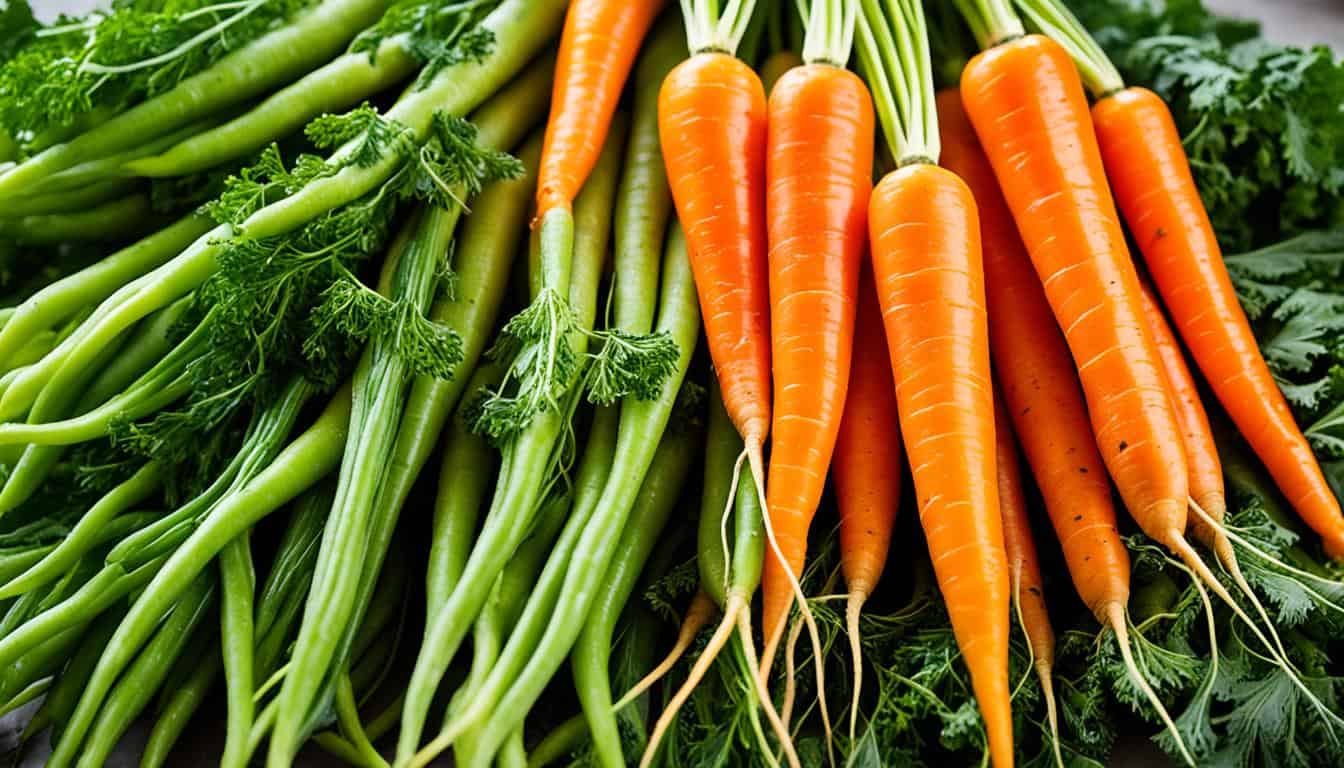
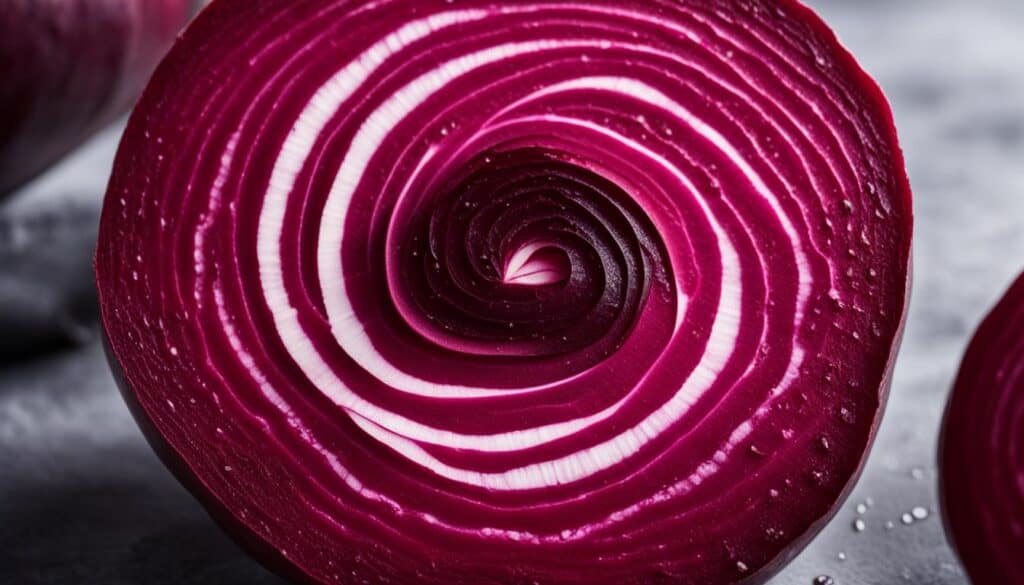
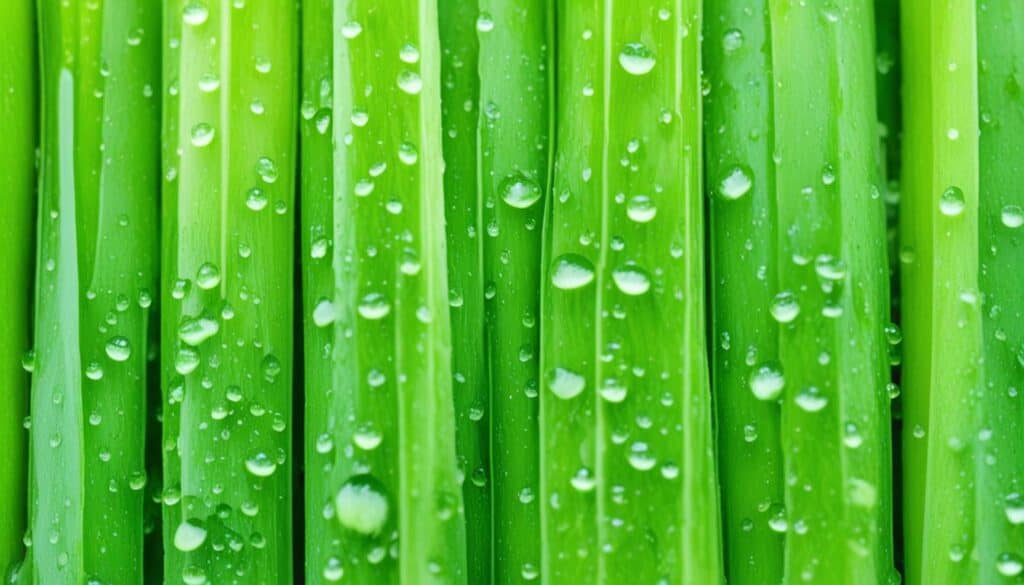
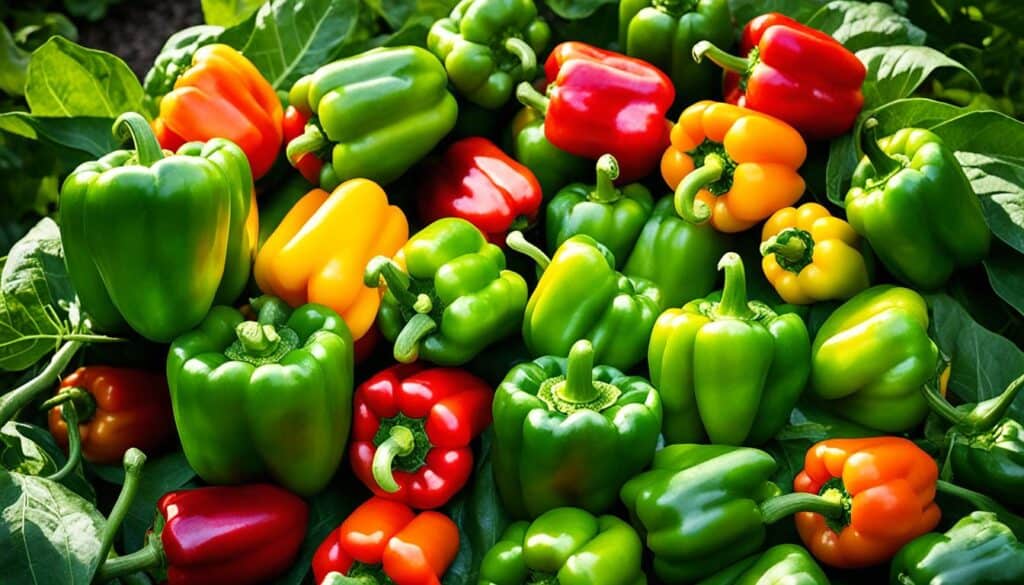
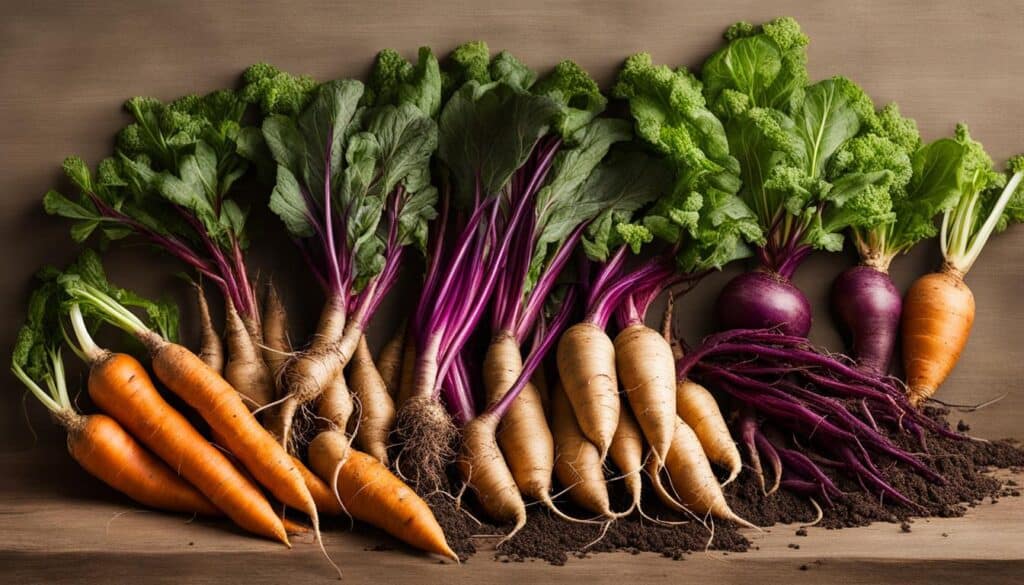




Leave a Reply